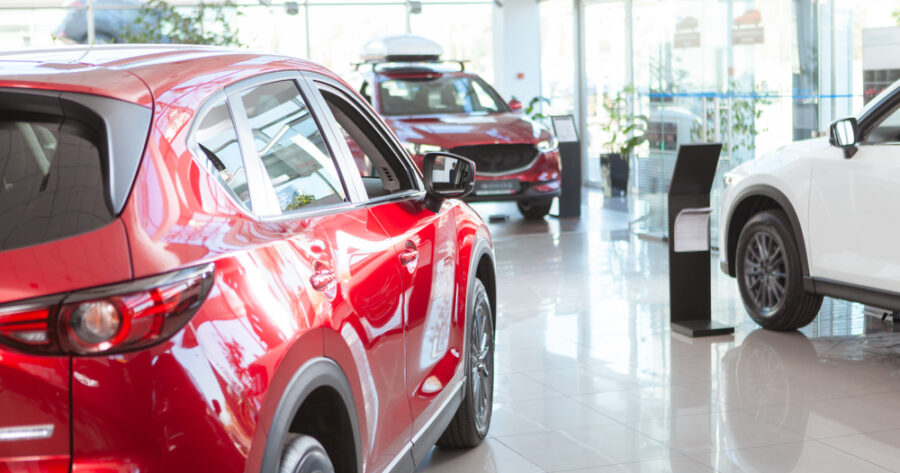Choosing a new SUV is an exciting decision, but it can feel overwhelming with so many options. SUVs come in various sizes, styles, and price ranges, each designed to meet different needs. By focusing on essential features, budget, and your lifestyle, you can confidently select the perfect SUV. Here’s a straightforward guide to help you make an informed choice for your next SUV.
Determine Your Budget and Financing Options
Setting a budget is one of the first steps in finding a new SUV. Decide how much you’re comfortable spending upfront or on monthly payments. Consider any extra costs, such as taxes, insurance, and registration fees, that might affect your final expense. Also, check into financing options if you need them. Many dealerships offer financing plans, and comparing interest rates can help you find the best deal.
Consider the SUV’s resale value as well. Some models hold their value better than others, meaning they’re worth more if you decide to trade in or sell them down the road. SUVs from brands known for their reliability and fuel efficiency tend to have higher resale values, saving you money in the long run.
Decide on the Right Size and Space
SUVs range from compact to full-size models, each with varying space and seating capacity. A compact SUV is ideal if you mostly drive alone or with a small family. These models offer better fuel efficiency and are easier to maneuver in tight spaces. However, if you need room for more passengers or cargo, a mid-size or full-size SUV might be better. They have spacious interiors and can comfortably accommodate more people or luggage.
If you plan to use the SUV for frequent road trips or carpooling, think about the third-row seating option, available in many larger SUVs. Some families also prioritize extra trunk space for groceries, sports equipment, or travel gear. Keep in mind that larger SUVs may consume more fuel, so weigh the space benefits against potential fuel costs.
Consider Safety Features and Ratings
Safety is a critical factor when choosing a new SUV. Look for models with high safety ratings from trusted organizations like the National Highway Traffic Safety Administration (NHTSA) or the Insurance Institute for Highway Safety (IIHS). These ratings can give you a clearer picture of how the SUV performs in various crash tests, helping you make a safer choice.
Modern SUVs come equipped with many safety features that make driving easier and safer. Features like lane-keeping assist, blind-spot monitoring, automatic emergency braking, and adaptive cruise control are becoming standard in many models. These technologies can prevent accidents by alerting you to potential dangers and assisting with safer driving. Make a list of safety features that are most important to you and use this as a checklist when comparing models.
Evaluate Performance and Fuel Efficiency
Performance is key when selecting an SUV, especially if you’ll be driving in various conditions or on long trips. Look at the engine options available, as different engines offer different balances of power and fuel efficiency. For daily city driving, a smaller engine with higher fuel efficiency is often sufficient. But if you need towing power or plan to drive off-road, consider an SUV with a more powerful engine or all-wheel-drive capabilities.
Fuel efficiency varies greatly among SUVs, depending on the size, engine type, and whether it’s a hybrid or traditional gasoline model. Hybrid SUVs are increasingly popular, offering a good balance between power and fuel economy. They may come at a slightly higher price, but the fuel savings over time can be substantial. Compare fuel economy ratings to ensure you’re choosing a model that suits your driving needs while helping you save on fuel costs.
Think About Technology and Comfort Features
Technology and comfort can make a big difference in how enjoyable your SUV is to drive. Infotainment systems with large touchscreens, Bluetooth connectivity, smartphone integration (such as Apple CarPlay and Android Auto), and navigation systems are common in newer SUVs. If you spend a lot of time driving, these features can enhance your experience by providing easy access to music, maps, and hands-free calling.
Comfort features, such as heated seats, adjustable lumbar support, and climate control, are also worth considering, especially if you often take long trips. Some SUVs come with premium sound systems, sunroofs, and ambient lighting for an upgraded experience. These features may add to the cost, so decide which are essential and which you can do without.
Test Drive and Compare Models
A test drive is an essential step in choosing the right SUV. Visiting a dealership and driving a few different models lets you experience firsthand how they handle, how comfortable the seats are, and how easy it is to see out of the windows. Pay attention to how the SUV feels on the road—does it handle smoothly? Is it quiet or noisy? Also, try using the controls for the infotainment system and safety features to see if they are user-friendly.
Consider taking notes during each test drive so you can remember your impressions when comparing models later. Visiting multiple dealerships and checking different brands will give you a broader view of what’s available and might even help you negotiate a better price.
Find an Exciting, New SUV
Choosing the right SUV involves balancing budget, size, safety, performance, and features. By thinking about your specific needs and trying out a few models, you can find an SUV that fits your lifestyle perfectly.
From the latest safety features to the comfort of a well-designed interior, the right SUV can bring convenience, safety, and enjoyment to your driving experience. Take your time, do your homework, and enjoy the journey to finding your ideal SUV.
